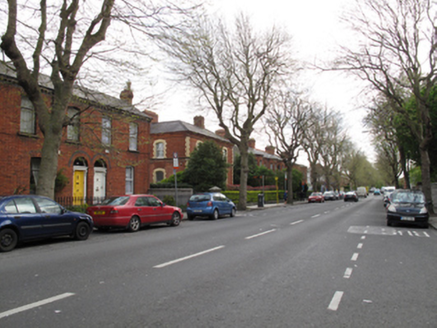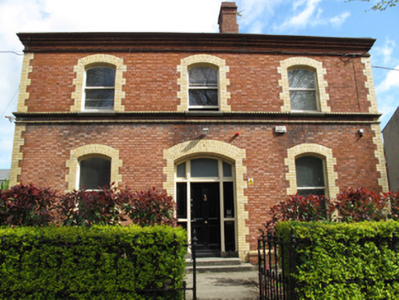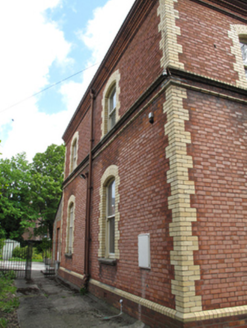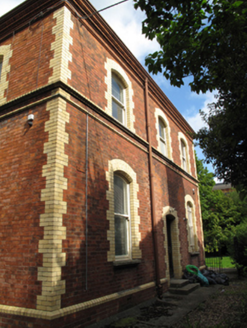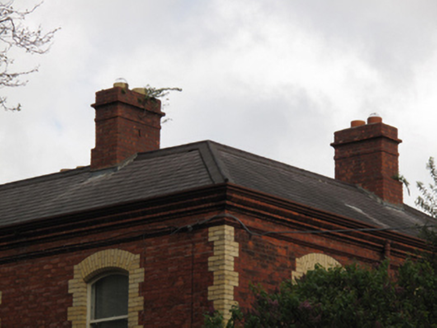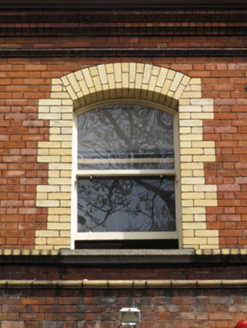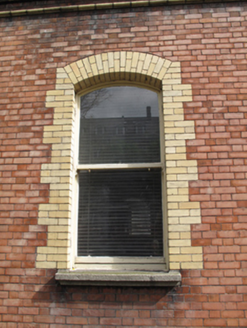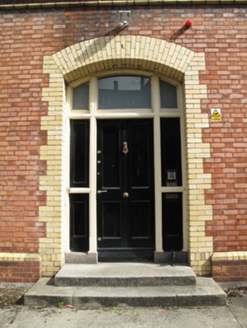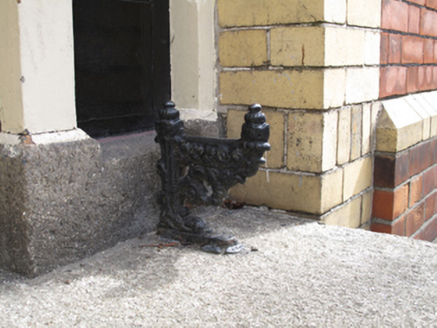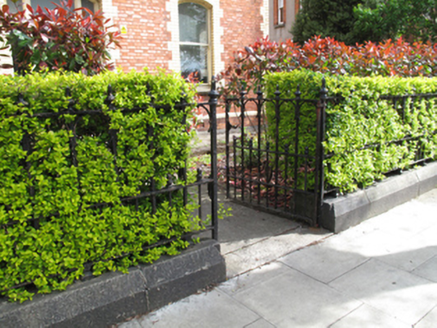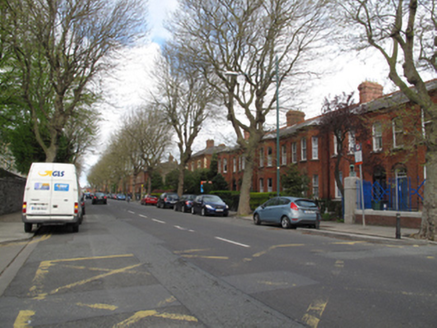Survey Data
Reg No
50080132
Rating
Regional
Categories of Special Interest
Architectural, Social
Previous Name
Saint Patrick's Presbytery
Original Use
Presbytery/parochial/curate's house
In Use As
Orphanage/children's home
Date
1890 - 1900
Coordinates
312978, 233431
Date Recorded
13/05/2013
Date Updated
--/--/--
Description
Detached three-bay two-storey presbytery, built c.1895, now in use as residential home. Lean-to extension to rear (north) elevation. Hipped slate roof, having hipped returns to rear, with red brick chimneystacks, moulded red brick eaves course, cast-iron rainwater goods. Red brick, laid in Flemish bond, red brick plinth course having carved yellow brick coping, and yellow brick block-and-start quoins. Brown brick, laid in Flemish bond, to rear elevation. Segmental-headed window openings, yellow brick voussoirs, block-and-start surrounds, carved limestone sills and one-over-one pane timber sash windows. Moulded yellow brick continuous sill course to first floor. Square-headed window openings to rear, red brick voussoirs and block-and-start surrounds, one-over-one pane timber sash windows. Segmental-headed door opening to front, yellow brick voussoirs and block-and-start surround, timber panelled door having sidelights and overlights, granite steps, cast-iron boot-scrape. Square-headed door opening to rear, red brick voussoirs and block-and-start surrounds, timber door and overlight. Garden to front, cast-iron railings on carved granite plinth course, matching pedestrian gate.
Appraisal
The elegant proportions of this former presbytery are enhanced by the symmetrical three-bay arrangement of the façade, with a central doorway and hipped roof. This design is derived from the characteristic design of glebe houses or small country houses of the early nineteenth century. Yellow brick detailing is employed to good effect to provide a visual contrast to the red brick and articulates the façade. The use of polychrome brick places the building within the context of the late nineteenth century, when this was fashionable. Thom’s directory of 1896 lists this as Saint Patrick's Presbytery, and it may have been connected to the adjacent convent building, forming part of an ecclesiastical group with the convent and adjoining chapel.
